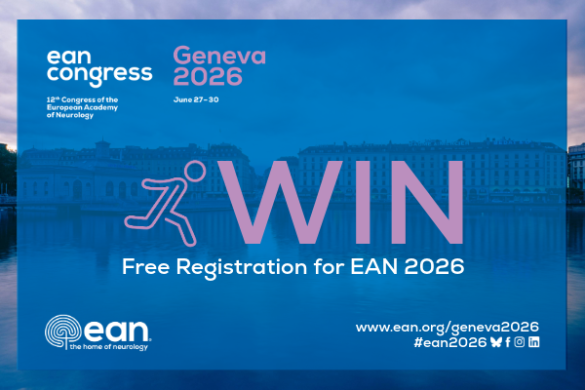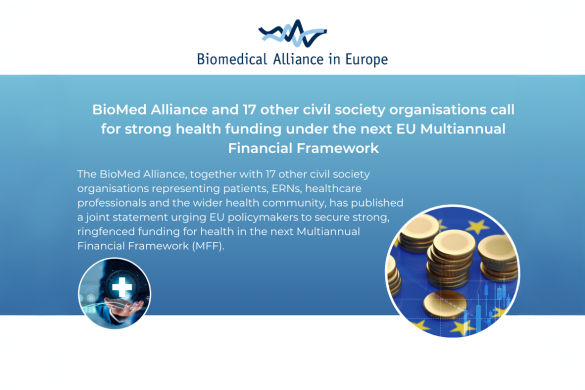by Mélisande Rouger
On the last day of EAN 2024, held in Helsinki, Finland, EAN President Prof. Paul Boon chaired the Highlights and Breaking News session together with EAN Programme Committee Chair Prof. Ulf Kallweit and EAN President-Elect Prof. Elena Moro.
Boon announced the winners of the EAN Tournament, starting with the victor in the basic category, Dr Jari Gool, and his study on Widespread white matter axonal loss in narcolepsy type 1 (NT1), a severely disabling neurological sleeping disorder characterised by excessive day time sleepiness and cataplexy, and caused by hypocretin-1 deficiency.
“The effects of hypocretin deficiency remain largely unknown although recent diffusion tensor imaging studies have suggested that there’s widespread reduced white matter integrity in NT1,” said Gool.
However the exact mechanisms behind these differences remained unknown, and Gool studied whether they could be due to lower axonal density, lower myelination or increased axon diameter.
He found lower axonal density but did not find consistent myelin integrity differences. “This is in line with the typical hypocretin projection pattern that we know,” he said. “But there are still open questions: is the hypocretin deficiency really explanatory for all the differences that we found here, or could it also be that chronicity or duration also played a role in the differences that we found?”
The winner of the clinical category, Dr Abidemi Otaiku, presented the prospective study he carried out in three population-based cohorts on distressing dreams, cognitive decline and risk of dementia.
“Dreams can predict the future, and more specifically the frequency with which we have bad dreams and nightmares can predict our risk of future dementia,” he said.
There is a lot of literature linking dreams and nightmares to Parkinson’s disease (PD). PD patients’ dreams are characterised by increased aggression, and these patients are four times more likely to experience frequent nightmares, he explained.
“In 2022 I showed that healthy individuals who experience bad dreams or nightmares every week are two-to-three times more likely to develop PD over the next decade,” he said.
In another study in people who were newly diagnosed, Dr Otaiku found that those who experienced frequent bad dreams were six times more likely to be disabled after five years, their cognition declined 33% faster and they were more than twice as likely to develop dementia. “That made me wonder if distressing dreams could also predict dementia,” he said.
Compared with middle-aged adults who reported having no distressing dreams at baseline, those who reported having weekly distressing dreams had a four-fold risk of experiencing cognitive decline. Among older adults, the difference in dementia risk was 2.2 times higher, he found.
Highlights from the Autonomic and Movement Disorders, Epilepsy, Multiple Sclerosis and Headache sections
Prof. Alessandra Fanciulli highlighted the work on autonomic nervous system diseases. “We had six sessions and 53 submitted abstracts on the topic, which is a huge rise from last year when we had 15 abstracts,” she said.
The EAN and the European Federation of Autonomic Societies (EFAS) have a very good cooperation and ongoing projects regarding guidelines on how to set up an autonomic unit.
“There is a severe disparity in autonomic healthcare provision and offer between North and Western Europe on one hand, and South and Eastern Europe on the other. So, if we have an autonomic specialist in a country with very few centres, how can we support this person to do so?”
Prof. Christine Klein and Prof. Bas Bloom then presented the highlights of the movement disorders section.
Hot topics included controversies in Parkinson’s disease diagnosis due to the new biological classification of PD. “There’s been a paradigm shift moving from clinical to research based classification,” Prof. Klein said.
The new gene PSMF1, which causes neurodegeneration when mutated earlier in PD, was presented during the meeting, as well as another pathogenic variant in wrap 32, which closely interacts with low 2, one of the best known and most common PD genes.
There was also a lot going on in tremor, and not just PD, but also essential and dystonia tremor, Prof. Bloom said. “One study, in which I am involved, showed that whole brain integration, which happens under the influence of stress and adrenalin, already happens 13 seconds prior to the onset of a clinically manifest tremor episode,” he said. “That opens a door to treating this component of tremor with propenylol, an old drug that can reduce the dimmer by damping the amplitude of the tremor”.
Other sessions in tremor focused on invasive neuromodulation, with important developments in focused ultrasound, which has now been expanded from treating unilateral lesions to bilateral lesions in PD. “FU with intensity works to open the blood brain barrier, allowing to bring drugs where they’re most needed,” he said.
Prof. Arjune Sen showcased the highlights of the epilepsy section and gave special mention to a tiny country in Africa. “In terms of submitted abstracts per square kilometre of country, Rwanda won the competition,” he said.
He focused on clinical aspects for the sake of time, and mentioned the intervention of Francesca Sofia, head of the International Bureau of Epilepsy, and the mother of a daughter with epilepsy. Sofia talked about the impact of epilepsy on her daughter’s life and the family.
“She wished there would be more education for empathy and sympathy, and she would like for her daughter not to be so stigmatised,” Prof. Sen said. “This wouldn’t apply with a diagnosis of asthma or diabetes and it shouldn’t apply to epilepsy”.
Prof. Laura Airas then showcased the highlights in multiple sclerosis (MS), mentioning the success story of MS drug development. “We have very efficient therapies for MS that control the disease, and the pipeline hasn’t dried out, for example with Frexolimab,” she said.
Last but not least, Prof. Pablo Irimia touched on headache, the costliest neurological disease today. He singled out work on brain simulation, the meeting with the Headache Federation, and the symposia with the epilepsy and stroke sections. Prof. Irimia also shared details about the 11th Congress of the European Academy of Neurology, which will take place in Seville, Spain on 21-24 June, with the overarching theme of Neurology within Society.











